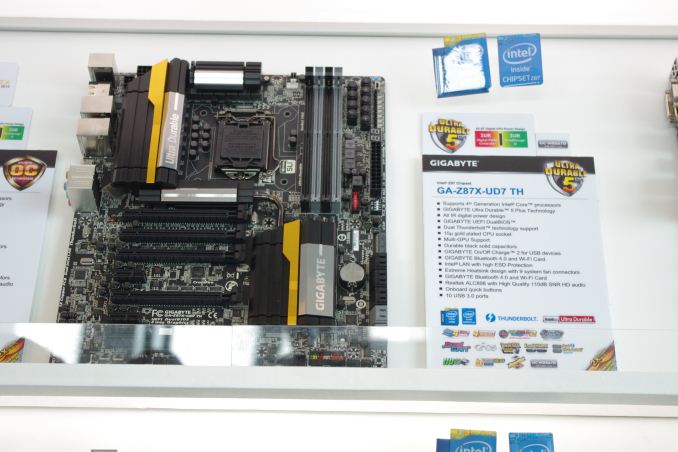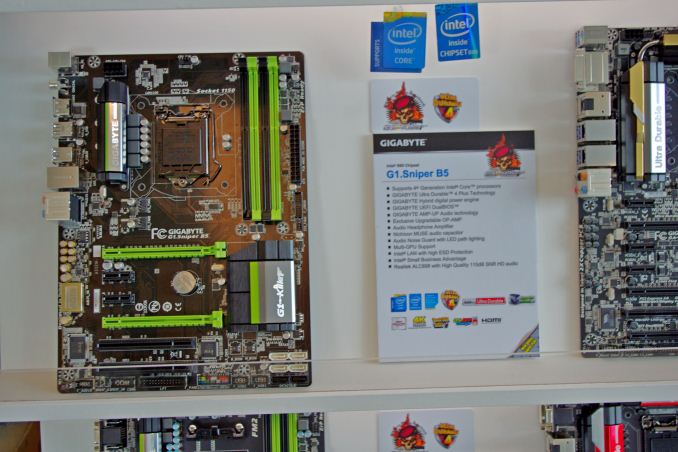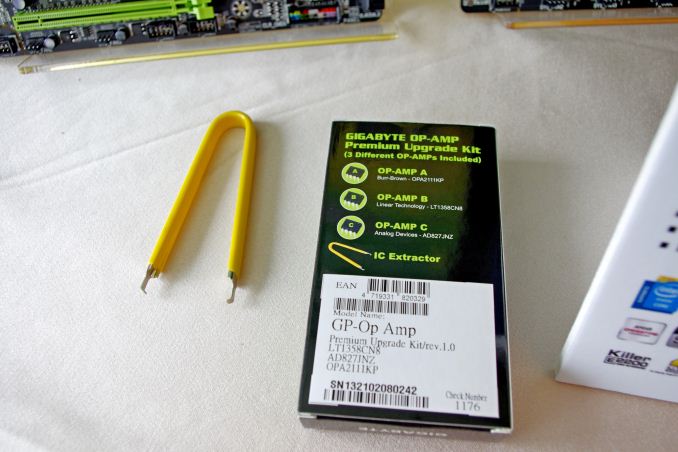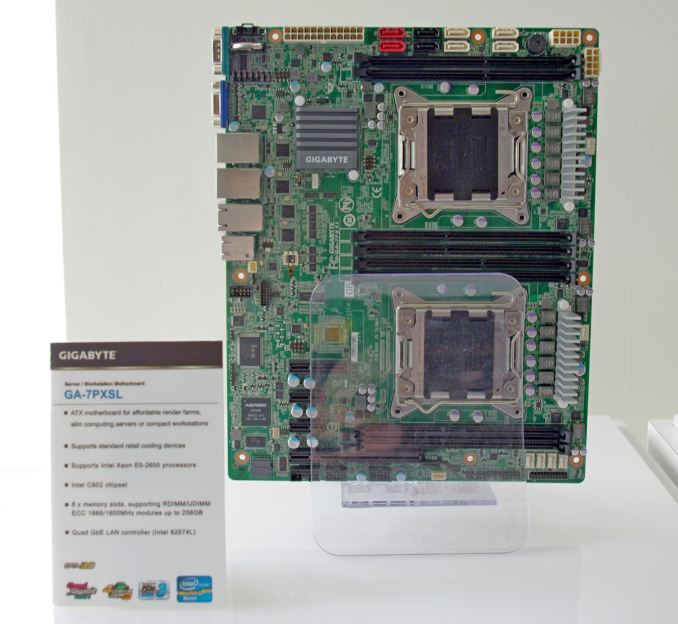Gigabyte at the Taipei 101
by Ian Cutress on June 11, 2013 10:00 AM EST- Posted in
- Trade Shows
- Gigabyte
- Computex 2013
Being a motherboard company, it would be a little odd not to cover the motherboards. Our preview coverage had a quick look at a few models via leaked images, and Gigabyte met up with Anand for a look at a couple of overclocking/gaming models. But now they are released and in the open, I cannot wait to get a few of these models in for review.
Gigabyte’s full launch ranges has the following models:
| Gigabyte's 8-Series Motherboards at Launch | ||||
|---|---|---|---|---|
| Z87 | GA-Z87N-WIFI | GA-Z87P-D3 | GA-Z87-D3HP | GA-Z87X-D3H |
| GA-Z87M-HD3 | GA-Z87X-OC | GA-Z87MX-D3H | GA-Z87-HD3 | |
| GA-Z87X-UD4H | G1.Sniper 5 | GA-Z87M-D3H | GA-Z87X-OC Force | |
| GA-Z87X-UD5H | G1.Sniper M5 | GA-Z87X-UD3H | ||
| H87 | GA-H87N-WIFI | GA-H87M-HD3 | GA-H87-HD3 | GA-H87M-D3H |
| GA-H87-D3H | ||||
| B85 | GA-P85-D3 | GA-B85M-HD3 | GA-B85M-D3H | GA-B85-HD3 |
In terms of naming schemes:
Z87X = SLI Support
Z87M = microATX
Z87N = miniITX
UDxH = Ultra Durable with Digital Video Output
UP = Ultra Durable 5 with IR355x 60A ICs
HD = Digital Video Output
D3H = D3 with Digital Video Output
D3HP = D3H with USB 3.0 Hub
At the suite itself, as in previous years, Gigabyte have the ‘wall of motherboards’, showcasing all the models listed above as well as a few not officially launched yet, such as the Z77X-UP7 TH and the B5 Sniper. The Z87X-UP7 TH in name and features suggests that Gigabyte are moving fully to the ‘OC’ range for overclocking motherboards and the UP7 now sits as a prosumer model at the top of the product stack alongside the Z87X-OC Force and G1.Sniper 5.
As it is the top model, we get a dulled gold theme to complement the gold of the UD5H, red theme of the UD4H and blue theme of the UD3H. Alongside Thunderbolt connectivity, the UD7 TH looks to follow some of the same principles of the Z87X-OC Force but more in a stability sense rather than an overclocking sense – we have fewer of the overclocking buttons and options (some are still present) but the same PCIe layout, PLX chip and 16-phase power delivery combination.
So when the G1.Sniper B5 caught my eye I was a little surprised, but it does make sense from a user point of view – if you want a gaming oriented motherboard without overclocking, then perhaps a B85 chipset model would be more cost effective. The downside of B85, aside from overclocking, is the lack of SLI on the regular G1.Sniper 5, as well as an adjustment to the rear IO connectivity options. This model also features the adjustable OP-AMP audio similar to the high end model.
The OP-AMP kit features three additional ICs aside from the two that appear into the box, and should be on sale for around $50.
On the server motherboard side, Gigabyte had a few models on display, such as a dual processor motherboard in an ATX form factor:
While still in the early stages of design, here is a dual Sandy Bridge-E motherboard in ATX, designed for a smaller chassis. I was told there is still work to be done regarding the design of the PCIe lanes (we clearly are not getting much GPU action here), but it should be available via regional sales offices later this year.














14 Comments
View All Comments
IanCutress - Tuesday, June 11, 2013 - link
There was a Haswell BRIX there, though it was just a shell / a hint towards a future product. It had the same shell as the Kabini BRIX, but they are still deciding on which processors to use - I was told to expect i3, i5 and i7. Hopefully we will see Crystalwell in there...kyuu - Tuesday, June 11, 2013 - link
Definitely interested in one of those Kabini BRIX as an HTPC solution. Hopefully one with the A4-5000 will be nice and cheap. It'd also be great if there was Miracast support.lemonadesoda - Thursday, June 13, 2013 - link
The BRIX is confused. It doesnt know what it wants to be: "server department", "thin client", "netbox", or "htpc". Jack of all trades, master ofCerb - Sunday, June 16, 2013 - link
Lots of mobos, great...but where's the B/H/Z87/5M(X)-D3HP? Why do they (though they aren't alone) add an internal USB hub on the big boards with several extra slots, instead of the smaller ones, where those are more precious? MicroATX and MiniITX could get much more use out of that than standard ATX,